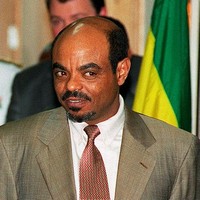For 20 years, Prime Minister Meles Zenawi has been the undisputed ruler of Ethiopia. Zenawi was the leader of the Tigray People’s Liberation Front (TPLF), which in concert with its sister rebel group from Eritrea toppled the Moscow-aligned dictator Mengistu Haile Mariam in 1991. He led his country in the 1998-2000 war against his former Eritrean allies and oversaw multiple Ethiopian military interventions into neighboring Somalia. An active and outspoken leader, Zenawi is also credited with a pragmatic approach to economic development despite his Marxist roots, resulting in an average of 9 percent GDP growth over the past 10 years.
Now the strong man of the Horn of Africa has disappeared -- literally: For almost two months, Zenawi has not appeared in public. Nor has he given any interviews and or any other indication that he is still alive, despite a high-profile summit of the African Union currently taking place in the Ethiopian capital, Addis Ababa.
The country’s ruling coalition, the Ethiopian People’s Revolutionary Democratic Front (EPRDF), has confirmed that medical issues are the reason for Zenawi’s “leave of absence,” but insists that he is recovering well and will resume working in September. But even if he does, Zenawi’s absence is a useful reminder for the governments of Ethiopia’s neighbors and its Western allies that, for the first time in two decades, they would do well to think about a post-Zenawi Ethiopia.

